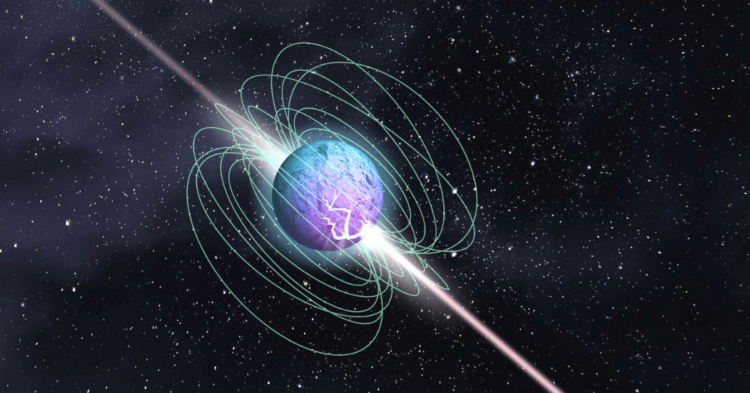Over a decade ago, researchers detected mysterious radio bursts. They suspected that the radio bursts were caused by magnetars but did not have enough evidence to support that theory. Now, new evidence collected at McGill University support this theory.
What are magnetars?

To answer that, we need to go a little further back . When some stars exhaust their nuclear fuel, they explode as a supernova. The outer layers of the star are blown off dramatically and brightly. After the supernova, the remaining star collapses into a dense ball. Some collapse so tightly they form a black hole. Other less dense formations are called neutron stars. About 10% of neutron stars have intense magnetic fields. Those stars are called magnetars.
It was hard to confirm that the magnetars created the radio bursts.

We have observed very strong busts from other galaxies, but only comparatively week bursts from magnetars in our own galaxy. This raised the question if magnetars were capable of producing intense enough radio emissions to account for the observations in different galaxies. But, the McGill observation was strong enough, and was in our galaxy!
On April 28, 2020, McGill University recorded unusually intense radio bursts.

Ziggy Pleunis, a doctoral student at McGill, said:
“So far, all of the FRBs that telescopes like CHIME have picked up were in other galaxies, which makes them quite hard to study in great detail. […] Moreover, the magnetar theory was not supported by observations of magnetars in our own galaxy as they were found to be far less intense than the energy released by extragalactic FRBs until now.”
This new discovery unlocks new research questions.

Because the magnetar is so close, it is the first time researchers can really study magnetars’ ability to create strong radio bursts. Soon, we may be able to unlock many puzzles, including finally solving the mystery of these intergalactic radio signals.
h/t: McGill University

















































